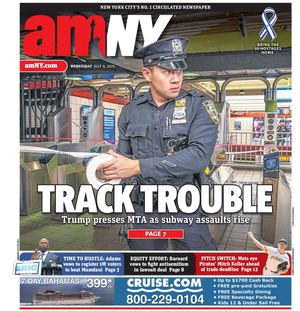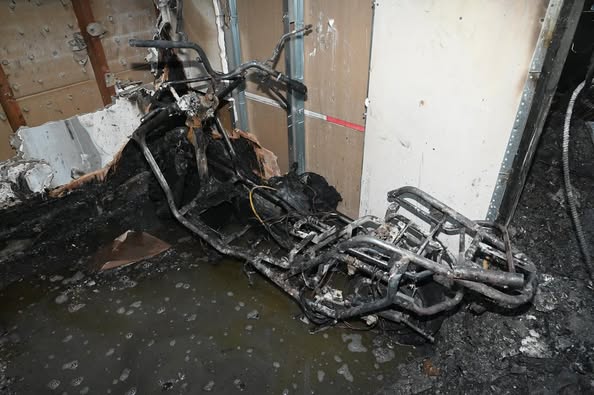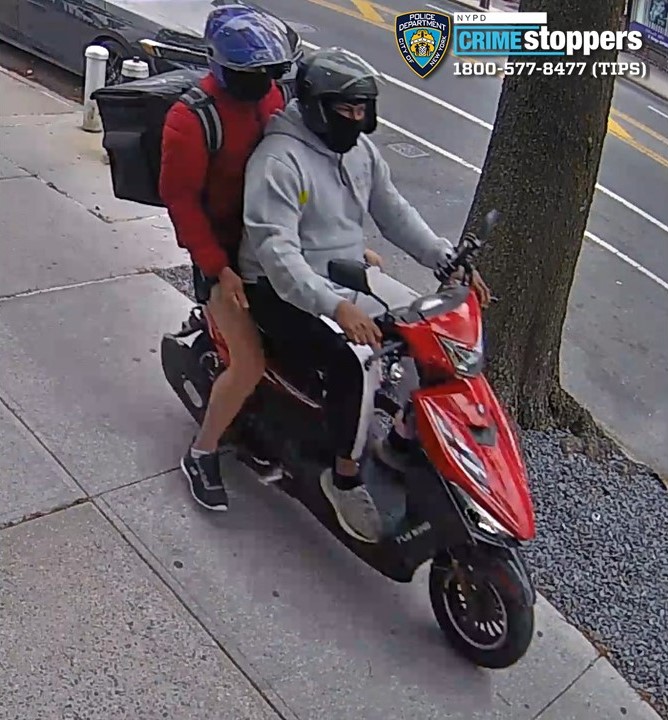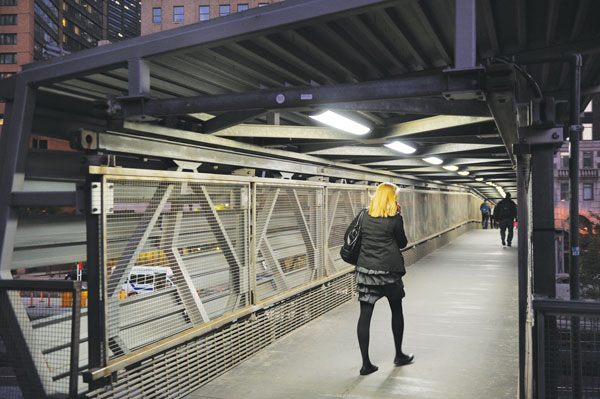 [/media-credit]
[/media-credit]
- A bridge spans West Street at Rector Place in Battery Park City. Community Board 1’s Battery Park City Committee would like to have monitored security cameras on the bridge but thus far the committee has not found a way to have them installed.
B.P.C.A. reports ‘good news budget:’
“Every once in a while you get to report a good news budget,” Battery Park City Authority president Gayle Horwitz said at the B.P.C.A.’s last Board of Directors meeting on Oct. 25. “Essentially, our revenues are up, our expenses are down. Our excess revenue for 2011 is going to be over budget as well. We’re sending the City more money than we anticipated.”
The Authority’s Chief Financial Officer, Robert Serpico, filled in the details. The fiscal year for the B.P.C.A. ends on Oct. 31, so his numbers were based on 11 months of activity. “Overall revenues are up $1.6 million over budgeted revenues based on a budget of $217 million,” he said. “The reason for the overages is that the sublease revenues had a net increase of $2.4 million.” He said that commercial revenues, which represent about 49 percent of the overall revenues for the Authority, were $811,000 more than budgeted.
Serpico said that on the residential side, “we had some ups and downs, as we usually do.” Sites 23 and 24, where the Milstein organization has built Liberty Luxe and Liberty Green, had a 421A tax abatement that had not been considered when drawing up the 2011 budget and had to be factored in, But, said Serpico, “non-recurring and contingent revenues on the sublease side were up $2.4 million. Again, net net, the sublease revenues went up $1.2 million.”
Operating expenses had been budgeted at $28.4 million for fiscal year 2011. “We’re coming in just a smidge over $27 million – a favorable variance of $1.4 million,” Serpico said. He added that the B.P.C.A. would be sending the City $12.5 million more than expected.
Looking toward the 2012 budget, Serpico said that there would be increased revenues of $10 million coming from Goldman Sachs, which had a tax credit that just ended. On the expense side, he anticipated $603,000 less in expenses than in fiscal year 2011.
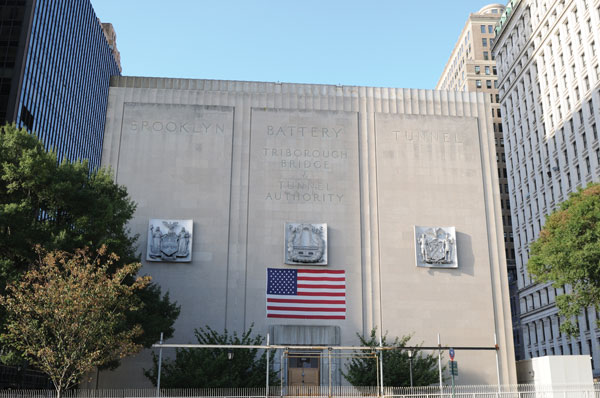 [/media-credit]
[/media-credit]
- The Manhattan side of the Brooklyn Battery Tunnel is getting a $43.5 million electrical upgrade to replace 1950’s era equipment. For 21 weekends beginning Friday, Nov. 11 through Monday, Nov. 14, one lane of the tunnel will be closed all weekend long in order to do the work. The MTA says that motorists should expect delays and try to use alternate routes during the weekend closures.
Brooklyn Battery Tunnel getting an overhaul:
Motorists who use the Brooklyn Battery Tunnel on the eastern border of Battery Park City should take note of the Metropolitan Transportation Authority’s plans for the next five months or so. The tunnel, which opened on May 25, 1950, is getting an overhaul. The M.T.A. is spending $43.5 million to replace electrical switches and feeder cables that are now more than 60 years old. The work will require one of the two tubes of the tunnel to be closed at various times during the overhaul. The first closure will occur this weekend and a second closure is expected next weekend, Nov. 18- Nov. 21. The M.T.A. says to “expect delays” and to use alternate routes if possible. Both tubes will be open during Thanksgiving weekend.
The Brooklyn Battery Tunnel has been a fixture of Lower Manhattan for so long that most people probably don’t give it a second thought, but maybe they should. For one thing, at 9,117 feet long, it is the longest continuous underwater vehicular tunnel in North America. For another thing, it almost didn’t get built. Robert Moses, the chairman of the Triborough Bridge Authority, who remade New York City’s landscape, wanted to build a bridge between Lower Manhattan and Brooklyn. It would have destroyed Battery Park and altered the majestic vistas of Lower Manhattan as seen by those who approach it from the ocean. The bridge would have been built had President Franklin Delano Roosevelt not intervened. He had the War Department declare that a bridge in that location, seaward of the Brooklyn Navy Yard, would have been vulnerable to attack, so Moses had to settle for a tunnel. It was designed by a Norwegian-born engineer, Ole Singstad, who also worked on the Holland Tunnel and who designed the Lincoln Tunnel and the Queens-Midtown Tunnel. Roosevelt was present at the groundbreaking in October 1940. The Brooklyn Battery Tunnel was supposed to be finished by 1943, but work on it stopped because of World War II and was not resumed until late in 1945. It took more than one million pounds of dynamite to bore through the rock and earth under New York harbor.
An estimated 60,000 cars a day go through the tunnel, however, some people will undoubtedly be more impressed with a different factoid. The tunnel’s Manhattan ventilation station on Battery Place figured in the 1997 film, “Men in Black” as the location of a secret alien immigration terminal.
Rector Place bridge security:
In late spring, Community Board 1 member Jeff Mihok started talking to C.B. 1’s Battery Park City Committee about his concern that the Rector Place bridge spanning West Street was not safe. “That bridge allows anyone on foot to come and go to and from the neighborhood very rapidly,” he said. “A year ago, a Battery Park City teen got beaten with a pipe on Rector Place by some other teenagers. I don’t know how those people got away but I can’t imagine any better escape route than over that bridge.”
Mihok would like to see monitored security cameras installed on the bridge, and the Battery Park City Committee concurred. However, the committee has not been able to figure out how to make that happen. Julie Nadel, a representative of the New York State Department of Transportation told the committee at its most recent meeting that the D.O.T. is not able to install and monitor cameras. The next step, the committee decided, would be to appeal to the New York Police Department’s First Precinct.
“I find it a little creepy to walk across that bridge,” Mihok said, “even when it’s not dark out. I have a 12-year-old kid. My 12 year old moves around the city on her own, as any 12 year old would do. I tell her never to take that bridge, but if there were a camera, I might reconsider.”
To comment on Battery Park City Beat or to suggest article ideas, email TereseLoeb@mac.com.
